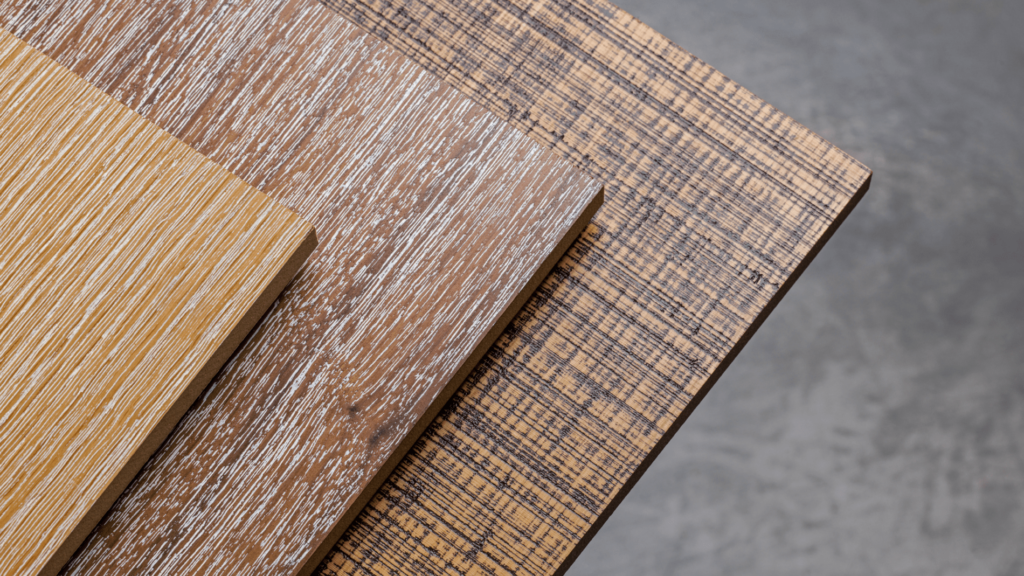When selecting materials for your woodworking projects or home renovations, you might be confronted with two common choices: plywood and block boards. These are both engineered wood products, but they possess certain qualities which differentiate them from one another. This blog post will explore the dissimilarities between plywood and block boards in order to assist you in making an educated selection according to your particular demands as well as project prerequisites.
1. Construction and Composition
Plywood:
Plywood is a sort of crafted wood board created by stacking thin layers of wood veneer together. These sheets are called plies. They’re piled up with their grain running in opposite directions to each other, making what we term a cross-grained structure. The number of plies can differ but generally, plywood panels have an odd number of layers for maintaining equilibrium and steadiness. The outside layers, named face veneers, are usually made from wood of better quality to look more pleasing.
Block Boards:
Block boards, which people sometimes call lumber core plywood, have a different construction. They are made from strips or blocks of wood that are placed in between two outer veneers. The main part is formed when wooden strips or blocks are lined up next to each other and stuck together with glue. The core’s grain goes along with the face veneers. These veneers are glued to each side of the core. The outermost veneers can be formed from different kinds of wood, chosen based on appearance and quality factors.
2. Strength and Durability
Plywood:
The strength and endurance of plywood are remarkable. The way it is made with crossed grains makes sure stress and loads are spread evenly over the panel, which gives it resistance to splitting, bending or shrinking. Plywood has an admirable balance between strength and weight that lets it carry substantial loads without making the structure too heavy. Moreover, plywood’s ability to resist impact and tolerate moisture helps to establish its dependability in many different uses.
Block Boards:
Block boards, even if they are still robust, might not offer the same strength and endurance as plywood. Because of the parallel grain direction in the core, these block boards could be more likely to split along grain lines when exposed to too much pressure or impact. Nevertheless, because of its solid wood core – this can give it good stability in terms of dimensions and also resistance against twisting, making it appropriate for various uses. We should remember that the strength of block boards can be influenced by the quality of outer veneers and how they are made.
3. Moisture Resistance
Plywood:
The structure of plywood, with its grains crossing each other, makes it strong and resistant to moisture. The alternating directions of the grain in plies help prevent expansion or contraction caused by changes in humidity levels. You can find different kinds of plywood that have water-resistant glues, which are good for use in places where there’s dampness or high humidity. Plywood that has marine grade is treated specially to endure water and moisture, so it’s a great pick for outside projects or places frequently exposed to wetness.
Also Read: Varieties Of Waterproof And Water-Resistance Plywood
Block Boards:
Block boards, even if they don’t easily warp, could lack the high moisture resistance that plywood has. The core made of solid wood might absorb moistness and thus later swell or change dimensionally. How much block boards can resist moisture mainly relies on the quality of the outer veneers and the kind of glue applied in the making process. If your project requires a lot of resistance to moisture, it is very important that you select block boards made for this purpose or think about using plywood instead.
4. Aesthetics and Finishing Options
Plywood:
Plywood gives many choices for aesthetics because there are different kinds of wood species used in making face veneers. Best Quality Plywood can have a look that matches what you want, from the warm colour of oak and maple to the exotic beauty found in mahogany or walnut. The surface is also smooth and even, which makes plywood very good as a base for different finishes like paint, stain or varnish. Plywood’s versatility allows for creative freedom in achieving the perfect appearance for your project.
Block Boards:
Block boards offer a special visual charm because they have a strong wood centre. The outside veneers are able to show off the chosen type of wood’s natural grain patterns and features, giving your project warmth and personality. Yet, the look of block boards might not be as uniform as plywood since sometimes core strips or blocks can be seen through the veneers. Regarding finishing, block boards can be stained, painted or varnished. However, the outcome could differ based on how good and even the outer veneers are.
Final Thoughts
When you are choosing the material for your woodworking or renovation project, it is very important to understand how plywood and block boards differ. You need to think about their structure, appearance, strength and cost, among other factors. It’s also crucial that no matter what you choose – plywood or block boards – always get materials from reliable suppliers and do the installation plus finishing correctly to achieve the best outcome possible. If one has a good understanding of these engineered wood items, then they can make beautiful projects that last a long time, showing off their craft skills and inventive ideas.


